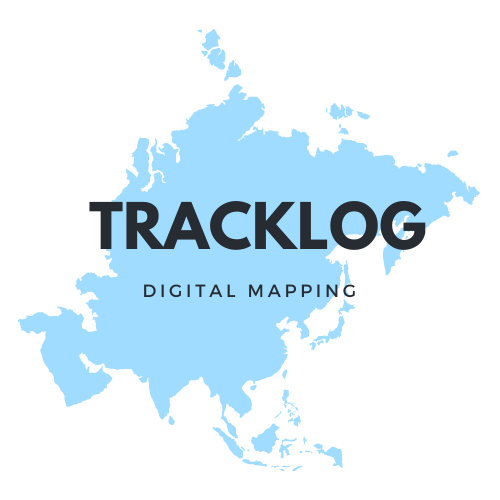1. Giving in-store customers more power
Customers come into your retail store with a variety of shopping lists and levels of product knowledge. Some customers enter with a list in hand and are seeking for inspiration. Others arrive without a list and are looking for general store department recommendations (e.g., Kitchen Small Appliances). Some customers know exactly what they need, right down to the brand (e.g., Cuisinart Kettle). Each of these sorts of shoppers can benefit from a digital map. So, there are a lot of advantages of using digital mapping. Customers can search, navigate, and learn about everything your retail store has to offer since they have information at their fingertips. The days of lost, perplexed, and irritated customers are over thanks to category listings, an effective AI-driven search, 3D interactive maps, and more. Retailers like Sephora Home Depot have made investments in strong mobile apps that let their customers study product details and get tailored deals. Retail establishments can give an end-to-end experience by integrating their customized indoor map experiences with current shopper applications using Mappedin’s SDKs.
2. Increased productivity for store employees
A digital map platform not only benefits customers, but it also gives retail establishments and the staff members who work there flexibility and operational efficiency. The ability to maintain your store layouts with a map management software is advantageous for retail establishments. Associates can quickly and easily alter store floor layouts, product specifications, or stock information using a digital map editor. The shopper-facing map updates in real-time after these items have been modified and saved. Associates can benefit from the digital shop map in addition to the editor platform. Employees stocking shelves or assembling online orders can utilize the same interactive map that customers use to find the fastest path through the store. Customers can frequently utilize a digital store map to locate products and their locations, freeing up your staff to provide product recommendations, restock shelves, and carry out other high-value tasks.
3. Specialized advertising and promotions
The shopping experience can be improved even more by combining precise digital maps with indoor location devices. Users can view their exact location within a store and use turn-by-turn guidance. This experience is offered by Mappedin’s real-time positioning for the web without the additional expense of IPS hardware. IPS offers additional channel of communication with your customers in addition to accurate location information. When used in conjunction with proximity marketing, you may send customers tailored notifications to let them know if an item on their shopping list has run out or if goods in the area are on sale. This extra point of contact with customers could be quite beneficial. In fact, when offered with in-store incentives like coupons, discounts, and limited-time offers, users are 78% more likely to take advantage of the offer.
4. Collect information on retail customers.
Retail establishments use information from consumers’ browsing of categories, product searches, and venue navigation to better serve them. An analytics dashboard for mapping can provide useful information about popular categories, search trends over time, customer interaction with digital promotions, and more. Examine graphic reports or download the raw data for comparison with the wealth of data that retailers currently have at their disposal. Making informed business decisions about your store and customer service can be aided by these additional information.
A store map explains to customers which products and departments are offered and where to find them. However, a digital map platform gives customers, shops, and their employees this advantage in addition to many others. Simple navigation, easy access to product information, and personalized offers all contribute to an improved and seamless shopping experience in a market where the customer is king. Contact us right now for more details about Mappedin’s indoor mapping solutions for retail.Go to our website to discover more about the retail store mapping software from Mappedin. You might also enjoy 5 Advantages of Digital Maps in Malls 4 minute read A mall experience has always been unique. Some see it as an opportunity to leave the house or a nearby, practical spot to pick something up. Buying ArticleRe-Inventing Retail, an eBook A minute read Technology is at the heart of the revolution that is sweeping the retail sector. As consumers seek a tangible world, the retail sector has become increasingly digital.
Full article: Enhancing Undergraduate Fieldwork with Digital Mapping and 3-D Visualization
To be informed about new studies that interest you, select new content alerts.Simple remote access to the subscriptions of your institution from any device and locationSave your searches, and set up notifications to notify you of updates. To aid your research, export your search results to a CSV file.
Abstract
AbstractThe traditional mapping techniques that students learn in their academic courses are being replaced by digital mapping technologies for obtaining and visualizing field data. A variety of digital mapping and 3-D visualization techniques have been added to the teaching curriculum at the Department of Earth Sciences at the University of Durham over the past two years. These techniques are used to prepare for field classes, while on the field, and in activities that follow field classes. The integration of digital mapping into fieldwork courses offers the chance to use research findings to improve students’ knowledge of the environment and their ability to learn about it, as well as to promote more rigorous and quantitative data collection and raise students’ awareness of business practices. We suggest using this strategy as one means of fostering closer ties between research and teaching in departments of earth sciences.
Introduction
The natural environment has been mapped by generations of geoscience students using compasses, measuring tapes, paper maps, field notebooks, mapping pens, and colored pencils. However, field data are increasingly being collected in the Earth and Environmental industries using handheld computers at GPS-determined locations before being visualized and analyzed in three dimensions (3-D) on desktop computers. Although the price of digital mapping hardware and software is rapidly reducing, it is probable that it will remain out of the normal undergraduate’s price range for the foreseeable future. However, students are being gradually introduced to the new digital mapping and visualisation approaches throughout their undergraduate programs at the Department of Earth Sciences at the University of Durham. Students can experience and discuss the benefits and drawbacks of digital mapping and visualisation compared to traditional methods by viewing and working with digital map data before, during, and after each field lesson, as well as by watching staff demonstrations of digital field data collecting. Staff can convey research data and conclusions, show industry methodologies, deepen students’ knowledge of core ideas, and promote more exacting field data gathering processes by exposing undergrads to digital mapping and visualization. As a result, it is possible to promote the connections between education, actual research, and software used in industry.

Electronic Mapping
A GPS receiver that can typically obtain differential correction data to enable sub-meter positional accuracy, a Personal Digital Assistant (PDA) or other digital datalogger, and mobile Geographical Information Systems (GIS) are three essential technological components that must be integrated into the digital mapping system.Table 1 shows the use of digital mapping and 3D visualization in the University of Durham’s 2003–2004 undergraduate Earth Sciences program.
Digital maps and their resources
Turner, A. K.(ed) NATO ASI Series C: Mathematical and Physical Sciences, volume 354, Three-Dimensional Modeling using Geoscientific Information Systems. Dordrecht, Netherlands: Kluwer Academic Publishers, pp. 13–27. GIS vector data in the form of points, lines, and polygons are collected during field data collection at each GPS-determined coordinate in three-dimensional space. Point data are the places on an outcrop where observations of its bedding, color, texture, foliation, lineations, etc. are recorded as characteristics using an input form on a PDA. By tracking the structure in the field and collecting 3-D coordinates that serve as the line’s nodes, contacts between rock units, faults, and fold traces are stored as vectors of lines. Similar to this, the areas occupied by various rock kinds are kept as polygon vectors. In addition to producing an accurate and efficient means of collecting field data, digital mapping techniques open up new possibilities for quantifying many types of uncertainty associated with the mapping process, and using this uncertainty to evaluate the validity of competing interpretations (Jones et al, In press JonesR. R. , McCaffreyK. J. W. , WilsonR. W. & HoldsworthR. E. , (In Press) Digital field data acquisition: towards increased quantification of uncertainty during geological mapping. “Geological Prior Information,” a Geological Society Special Publication (Google Scholar).
Google maps is just a great item, you should not collect traditional paper maps anymore. Digital cartography becomes more and more popular nowadays; mapping industry should being developed also quickly for the people not to be disappointed in them.

